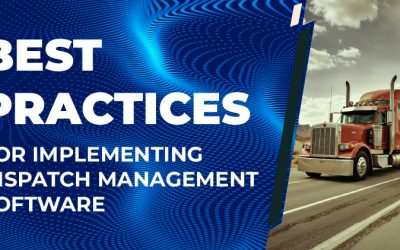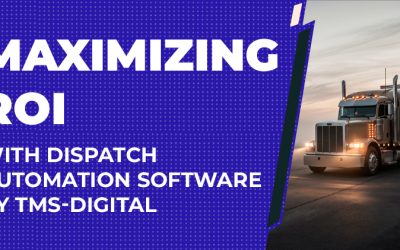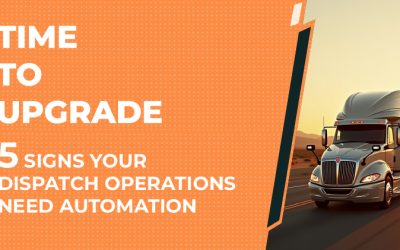
In the competitive world of logistics, staying ahead means embracing tools that streamline operations and maximize efficiency. Dispatch management software is a game-changing solution that helps logistics companies handle increasing demands for faster delivery times and superior customer service. However, with numerous options available, finding the perfect software can be daunting. This guide from TMS-Digital will walk you through everything you need to know to select the ideal dispatch management solution in 2025.
What is Dispatch Management Software?
Dispatch management software is a technology solution designed to automate and enhance the processes of scheduling, routing, and monitoring deliveries. It serves as a centralized platform, integrating key functions such as:
- Fleet management
- Real-time tracking
- Route optimization
- Performance reporting
With the rise of e-commerce and heightened customer expectations, dispatch management software has become indispensable for logistics companies. Its features—such as automated job assignments and real-time communication between drivers and dispatchers—not only improve delivery times but also offer actionable insights to elevate operational efficiency.
Why Dispatch Management Software is Crucial for Logistics Companies
In today’s fast-moving logistics landscape, challenges like increasing fuel costs, growing delivery volumes, and the need for real-time tracking are common. Dispatch management software helps overcome these hurdles while delivering the following key benefits:
- Optimized Routes
Real-time data enables the software to suggest the most efficient routes, reducing travel time, fuel consumption, and costs. - Better Customer Experience
Customers can track deliveries live and receive accurate updates, fostering trust and reducing inquiries to customer support. - Enhanced Productivity
Automating tasks like job assignments and route planning allows your team to focus on high-value activities while minimizing human error. - Cost Efficiency
By cutting down on unnecessary delays and optimizing fleet usage, dispatch software helps lower operational expenses. - Scalability
As your business grows, dispatch management systems make it easy to add vehicles, drivers, and routes without major disruptions or expenses.
Essential Features to Look for in Dispatch Management Software
Choosing the right dispatch software means finding a solution tailored to your operational needs. Here are the must-have features to look for:
- Real-Time GPS Tracking
Monitor your fleet’s location at all times to ensure timely deliveries and maintain transparency with customers.
- Advanced Route Optimization
Leverage algorithms that account for traffic, weather, and road conditions to design the fastest and most efficient delivery routes.
- Automated Job Assignments
Assign jobs to the most suitable drivers automatically, ensuring optimal resource allocation.
- Driver Communication Tools
Enable seamless, real-time communication between dispatchers and drivers with integrated messaging and notifications.
- Mobile Access
Ensure drivers can access schedules, navigate routes, and communicate via a mobile-friendly platform.
- Analytics and Reporting
Gain actionable insights into fleet performance, identify inefficiencies, and make data-driven decisions to enhance profitability.
- System Integration
Choose software that integrates with your existing systems—such as CRM, inventory management, and accounting tools—for streamlined operations.
- Comprehensive Fleet Management
Manage vehicle maintenance schedules, fuel usage, and driver performance to extend fleet longevity and reduce costs.
How to Select the Best Dispatch Management Software in 2025
To make the right choice, you’ll need to evaluate software options based on your company’s unique needs and priorities. Follow these steps to ensure you pick the best fit:
-
Assess Your Needs
Analyze the size of your fleet, delivery volume, and route complexity. Understanding these factors will help you identify software features essential for your operations.
-
Prioritize Scalability
As your business expands, your dispatch system should seamlessly accommodate growth without requiring a complete overhaul.
-
Ensure User-Friendliness
Select software that’s intuitive for both dispatchers and drivers, reducing the need for extensive training and boosting adoption rates.
-
Check Reviews and Testimonials
Learn from the experiences of other logistics companies by reading user reviews and case studies to gauge performance, reliability, and customer support.
-
Focus on Security
Protect sensitive data by ensuring the software adheres to robust security protocols and complies with industry standards.
-
Evaluate Costs and ROI
Look beyond the initial cost and consider long-term savings from increased efficiency, reduced delays, and improved customer satisfaction.
-
Request a Trial or Demo
Test the software with a free trial or demo to ensure it meets your requirements before committing.
Conclusion
Investing in dispatch management software is essential for logistics companies looking to thrive in 2025. By optimizing delivery routes, enhancing fleet management, and improving customer service, the right solution can drive significant operational improvements.
At TMS-Digital, we understand the unique challenges of the logistics industry. Our advanced dispatch management software is designed to help you streamline operations, boost productivity, and exceed customer expectations.
Ready to elevate your logistics operations? Schedule a free demo with TMS-Digital today and discover how our solutions can revolutionize your business!
Click Here to Get Started Now!










